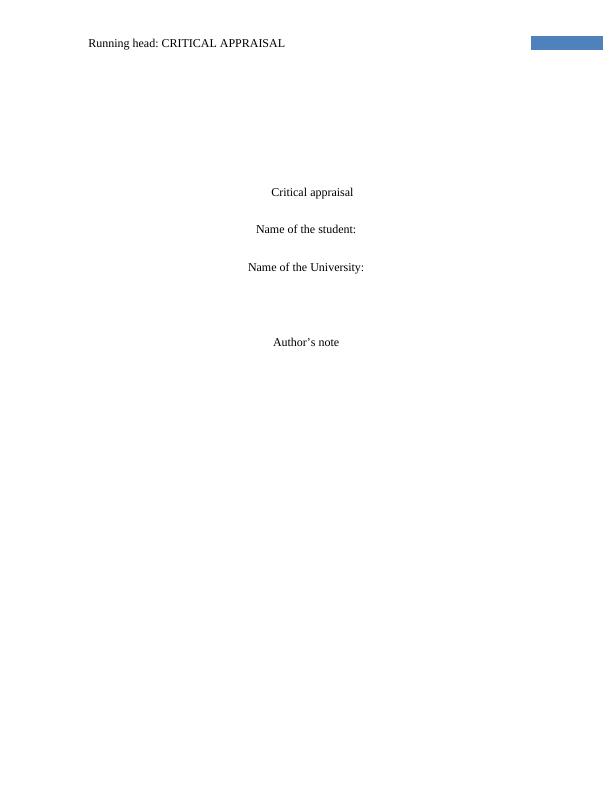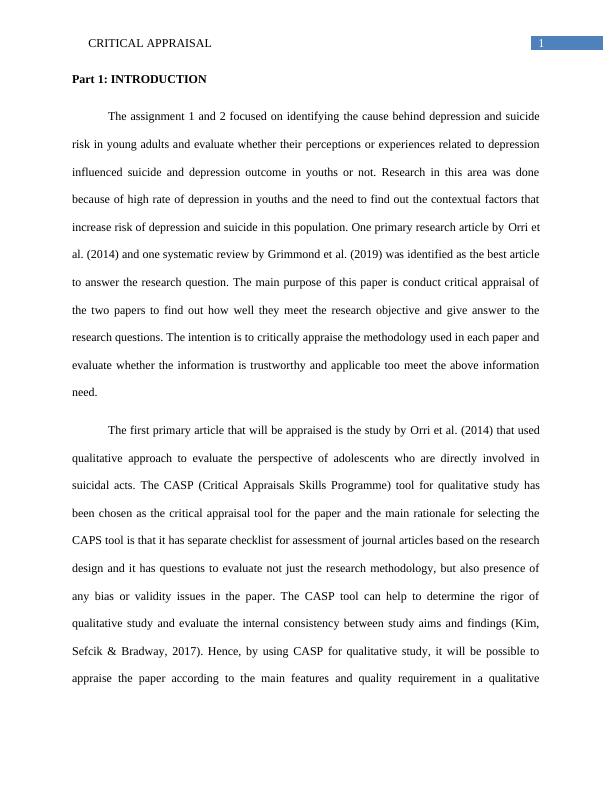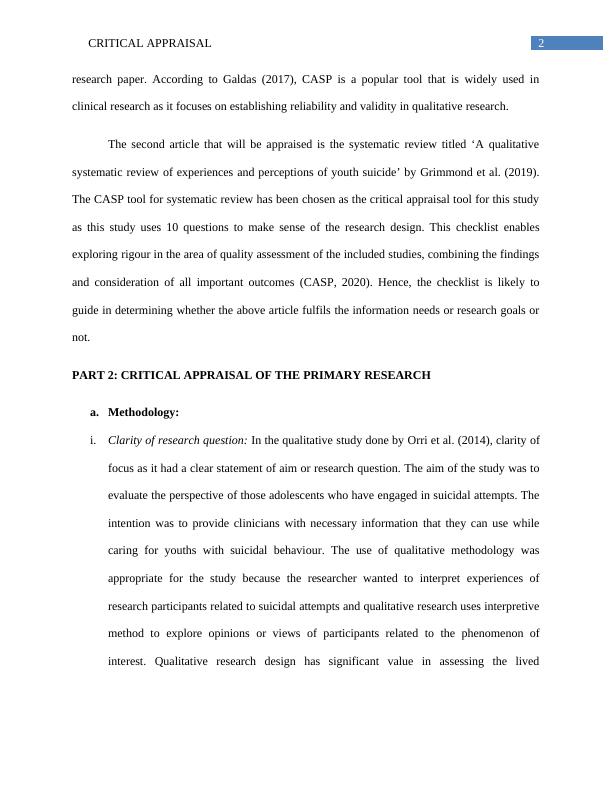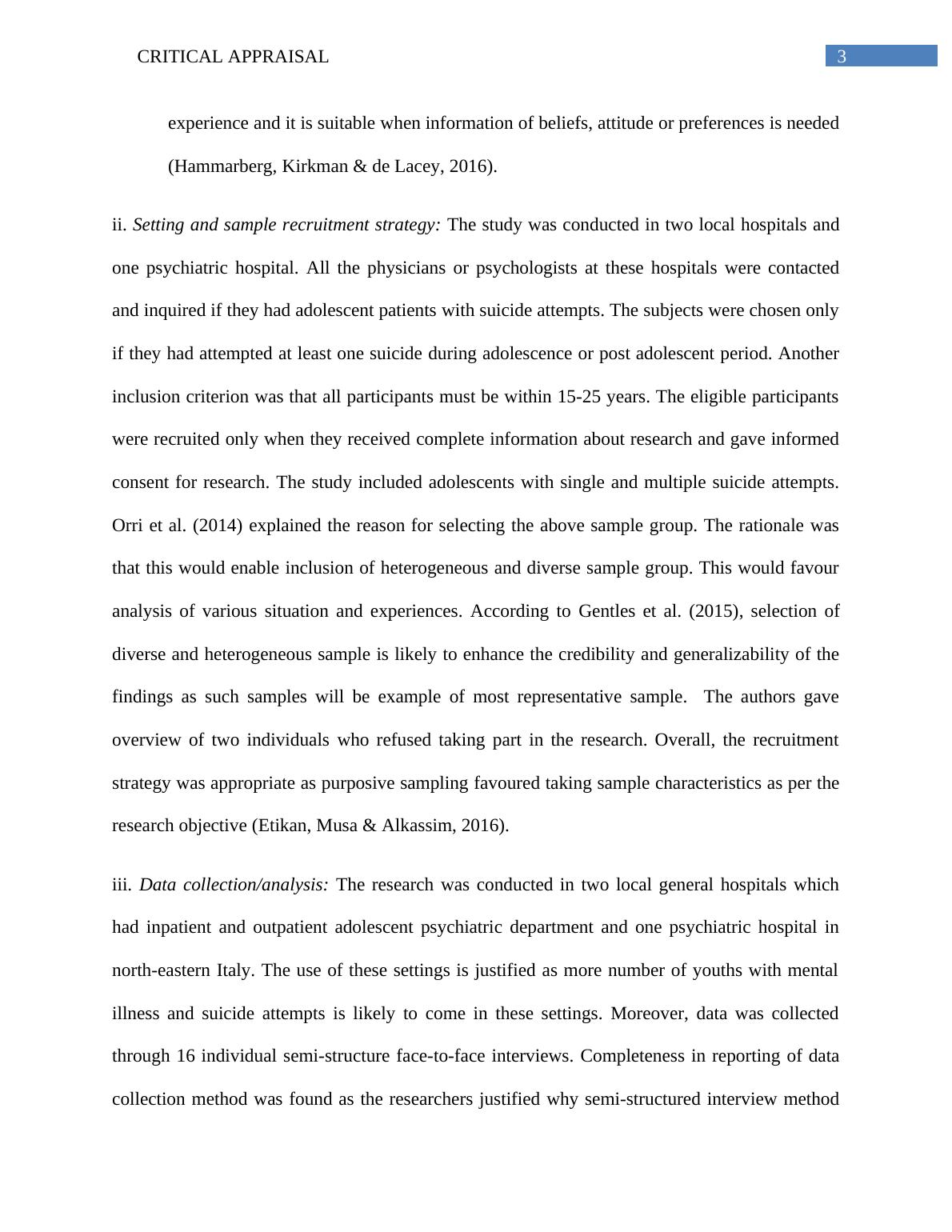Suicide Risk In Young Adults
Assessment guide for PBH91001 Appraising Evidence course including three assignments: Discussion formulating structured questions, Report on finding evidence, and Critical appraisal of found items.
16 Pages4398 Words19 Views
Added on 2022-09-15
Suicide Risk In Young Adults
Assessment guide for PBH91001 Appraising Evidence course including three assignments: Discussion formulating structured questions, Report on finding evidence, and Critical appraisal of found items.
Added on 2022-09-15
ShareRelated Documents
End of preview
Want to access all the pages? Upload your documents or become a member.
Critical Analysis of Research Paper
|10
|3540
|42
Critical Appraisal of Qualitative and Quantitative Papers
|18
|3918
|336
CASP Qualitative and Systematic Review Checklists
|5
|715
|148
Research in Nursing
|9
|2980
|81
Critical Appraisal of a Qualitative Research Article on the Experience of Hospital after a Suicide Attempt
|8
|2713
|3
CASP Qualitative and Systematic Review Checklists
|5
|680
|181




